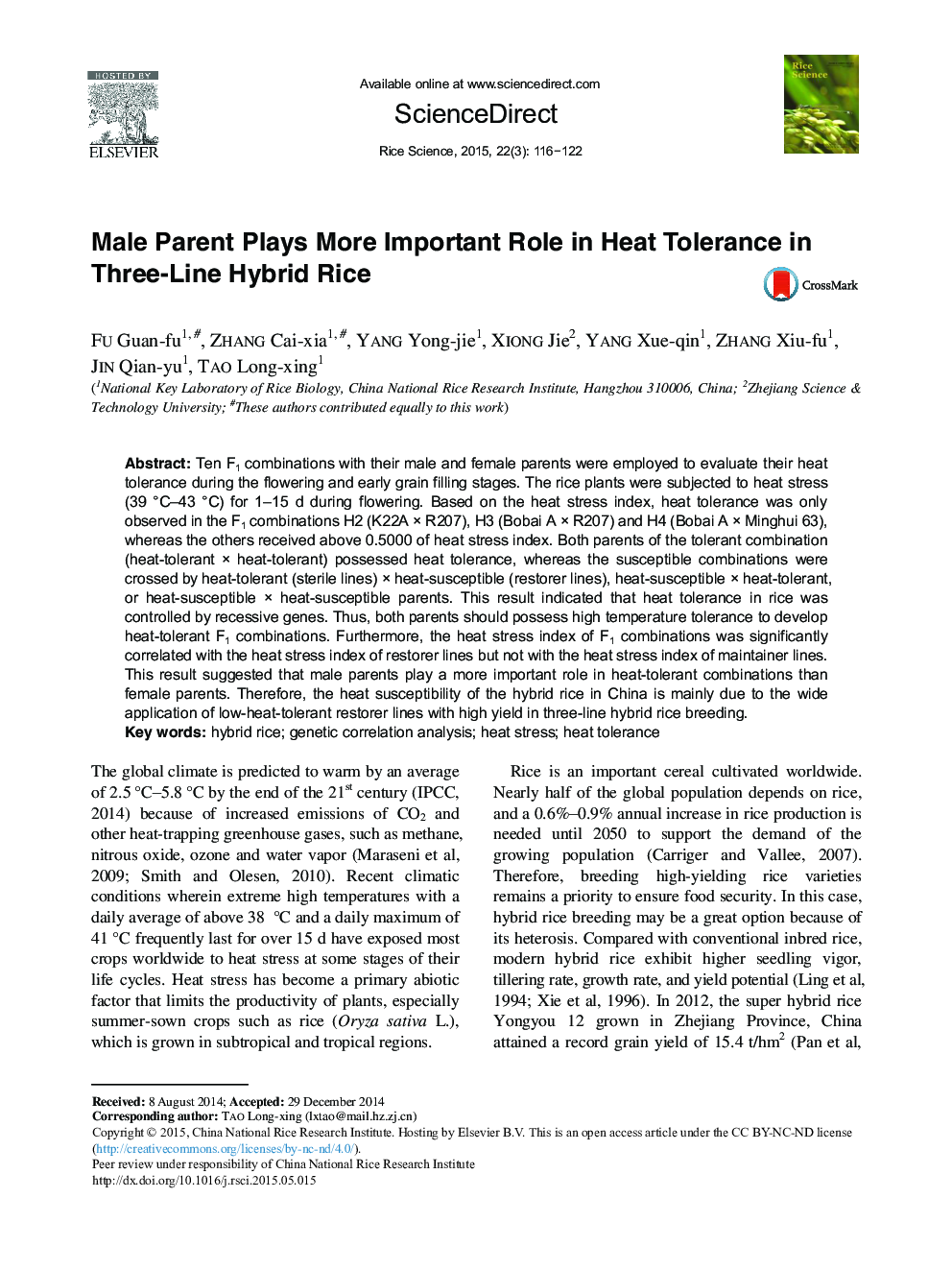| Article ID | Journal | Published Year | Pages | File Type |
|---|---|---|---|---|
| 4501743 | Rice Science | 2015 | 7 Pages |
Ten F1 combinations with their male and female parents were employed to evaluate their heat tolerance during the flowering and early grain filling stages. The rice plants were subjected to heat stress (39 °C–43 °C) for 1–15 d during flowering. Based on the heat stress index, heat tolerance was only observed in the F1 combinations H2 (K22A × R207), H3 (Bobai A × R207) and H4 (Bobai A × Minghui 63), whereas the others received above 0.5000 of heat stress index. Both parents of the tolerant combination (heat-tolerant × heat-tolerant) possessed heat tolerance, whereas the susceptible combinations were crossed by heat-tolerant (sterile lines) × heat-susceptible (restorer lines), heat-susceptible × heat-tolerant, or heat-susceptible × heat-susceptible parents. This result indicated that heat tolerance in rice was controlled by recessive genes. Thus, both parents should possess high temperature tolerance to develop heat-tolerant F1 combinations. Furthermore, the heat stress index of F1 combinations was significantly correlated with the heat stress index of restorer lines but not with the heat stress index of maintainer lines. This result suggested that male parents play a more important role in heat-tolerant combinations than female parents. Therefore, the heat susceptibility of the hybrid rice in China is mainly due to the wide application of low-heat-tolerant restorer lines with high yield in three-line hybrid rice breeding.
